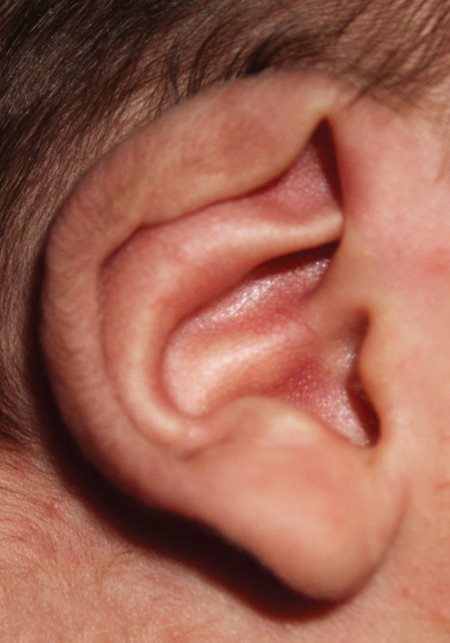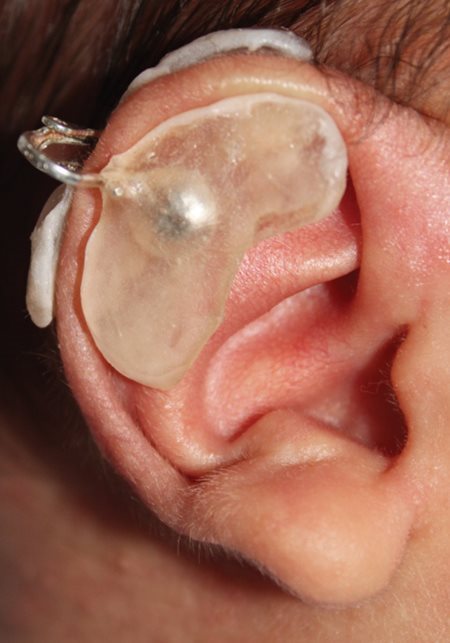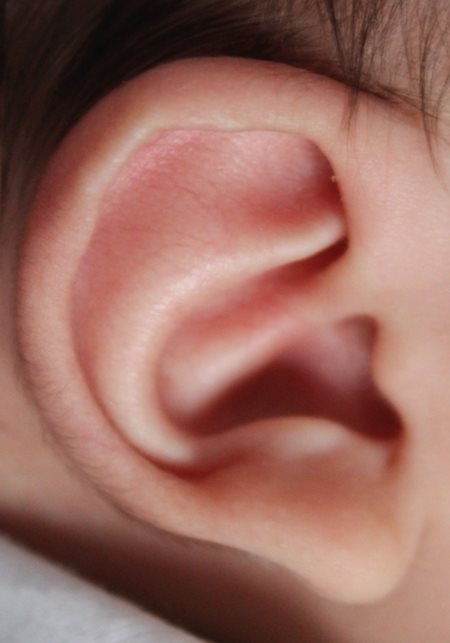Ear Deformities at Birth
Also known as: ear anomailes.
What are ear deformities in newborns?
When an infant is born with an irregular ear shape, they are said to have a baby ear deformity. Luckily, these small irregularities can often be treated without the need for invasive procedures. Infant ear molding is a non-surgical method of correcting mild ear deformities that are present at birth.
What are the causes and symptoms of deformed ears in babies?
Deformities are often isolated and caused by the baby’s positioning in the womb. However, they can sometimes be the result of a genetic mutation. Symptoms can range from mild shape abnormalities to complete absence of the ear (microtia). In syndromic cases, there may also be jaw or other facial skeletal issues and asymmetry.
How do ear molds for babies work?
The physician will place a mold in the deformed ear. Over time (typically 6-8 weeks), the molding will apply light pressure to correct the ear shape. The molds should not be removed until the treatment is complete and the physician will assess their progress every 2-3 weeks.

Before
|

During treatment
|

After
|
When should ear deformity correction begin?
It is best to begin treatment within the first six weeks after birth (when the cartilage is most malleable). After eight weeks, infant ear molding becomes less effective and ear deformity surgery may become necessary.
The board certified pediatric plastic surgeons at Nicklaus Children's Hospital have extensive experience with children who have ear deformities. All have special training in pediatrics. Whether or not ear molding is the solution, our team of professionals is devoted to caring for your child in a way that best suits his or her needs.
This page was last updated on: March 31, 2021 02:25 PM